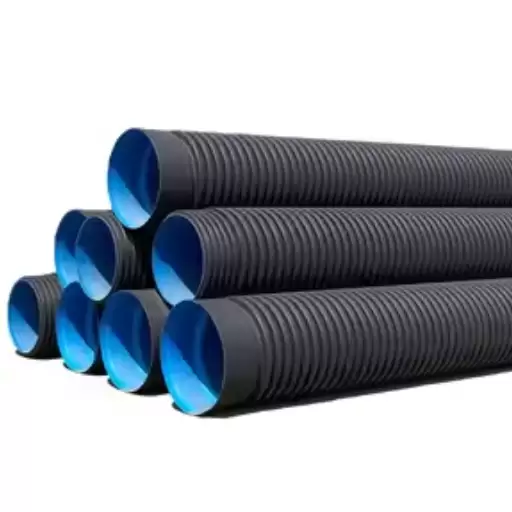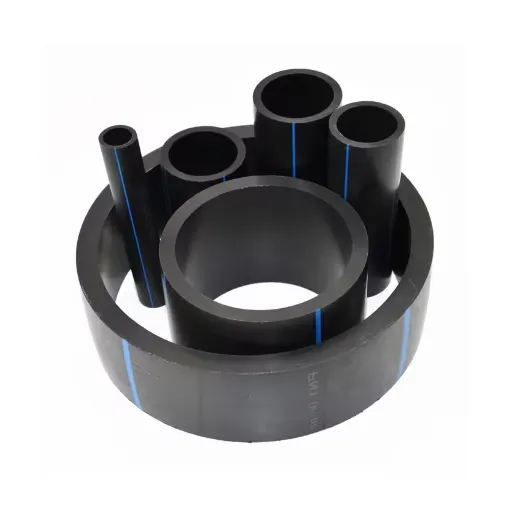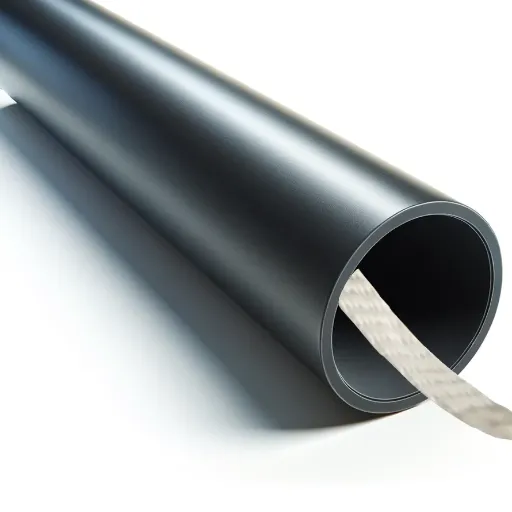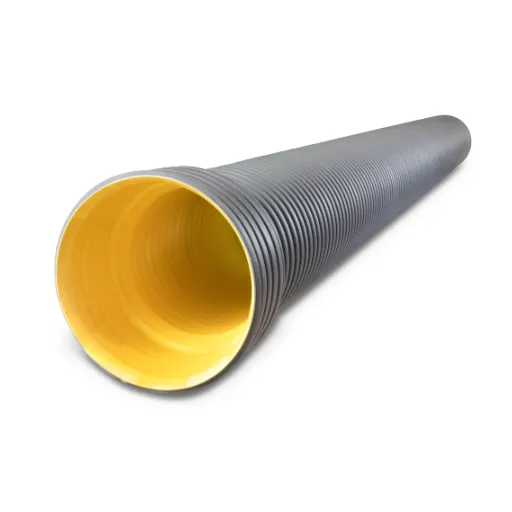High-Density Polyethylene (HDPE) pipes have become a critical component in modern infrastructure, celebrated for their durability, flexibility, and cost-efficiency across numerous applications. From water distribution and gas pipelines to industrial systems and agricultural irrigation, understanding the nuances of HDPE pipe sizes and dimensions is essential for engineers, contractors, and decision-makers alike. This guide dives into the intricate details of HDPE pipe specifications, offering a detailed look at how these pipes are measured, classified, and selected for various projects. Whether you’re tackling a major municipal project or simply want to deepen your technical knowledge, this article provides the insights you need to make informed decisions and achieve optimal performance.
What are HDPE Pipe Sizes and Why Do They Matter?
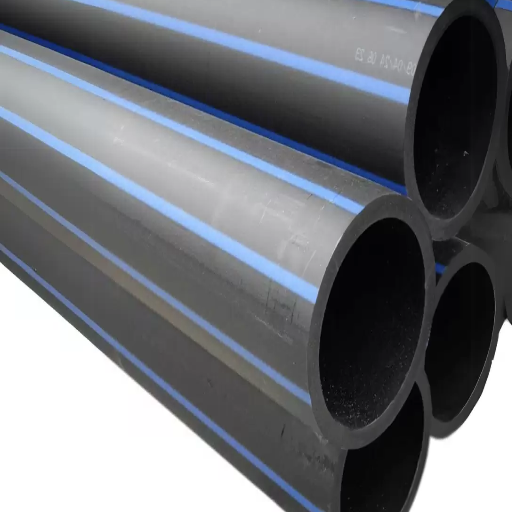
Exploring the Dimension and Diameter of HDPE Pipes
HDPE (High-Density Polyethylene) pipes have various sizes and diameters designed to suit different types of applications. The size of HDPE pipes is defined by the external diameter (OD), wall thickness, as well as pressure rating and durability. The sizes are set with respect to international standards such as ASTM, ISO, or DIN standards, which helps in selecting the pipes with specific requirements.
The standard dimension ratio (SDR) determines the design and classification of HDPE pipes. SDR is defined as the diameter of the pipe divided by the wall thickness of the pipe. Lower SDR values indicate thicker pipe walls, which offer greater pressure resistance. This renders the applications of higher pressure-rated HDPE pipes in water distribution, gas pipelines, and industrial fluid management. Lower pressure-rated pipes may be intended for drainage or conduit systems.
Knowing wall thickness and diameter is critical to ensuring compatibility with project requirements and maintaining long-term functionality. For example, careful selection of the pipes SDR still guarantees safety under operational stress while reducing the likelihood of failure and extending the service life of the entire piping system. The correct dimensions need to be evaluated in the context of flow requirements, operating pressure, and environmental conditions.
Key Factors in Selecting the Right HDPE Pipe Size
The system’s flow requirements are one of the most important factors when selecting an HDPE pipe size. The HDPE pipe’s diameter must be big enough to transport the fluid while not creating significant pressure loss and flow turbulence. Flow rate, often expressed as gallons per minute (GPM) or liters per second (L/S), has a direct correlation with internal diameter. The energy cost of hardware for operation is directly proportional to the operational needs; thus, efficient transport requires appropriate sizing.
The operating pressure of the system also plays a crucial role. Different water pipes come with different HDPE pressure ratings. System operations exerting mechanical stress during system use, designed with dangerous and high internal pressure, require SDR pipes with heavier-walled components. Lower SDR values are also good, but not adjustable, as these designs require thick walls to withstand internal pressure without failure. The needs of the system should ensure it achieves the right SDR classification aligned with the operational demands on performance.
The factors surrounding the environment are crucial when it comes to selecting a specific type of pipe. Depending on the application, HDPE pipes may encounter various temperatures, UV (Ultraviolet) radiation, chemicals, or even certain types of dirt. Encased piping systems, for instance, must consider the movement and weight of the soil, while above-ground installations must ensure protection from UV harm. Analyzing environmental aggression factors helps sustain the mechanical strength and durability of the pipe in its designated location. Decision-makers can choose the right diameter of the HDPE pipe needed for the application after assessing all the necessary factors.
Comparing HDPE Pipe Sizes to Other Materials
The dimensions of HDPE (high-density polyethylene) pipes possess in comparison to other materials such as PVC, steel, or concrete, play an integral role in determining the suitability for particular applications. Flexibility and adaptability are hallmarks of HDPE pipes, as they permit customization in size and length. Unlike steel or concrete pipes, which tend to be more rigid in custom size flexibility, HDPE has options ranging from small conduits for telecommunication to large-scale piping that serves industrial and municipal water systems.
Due to smoother interior surfaces, which minimize friction, HDPE pipes offer superior flow capacity compared to many traditional materials. For instance, hydraulic benefits associated with HDPE support its smaller diameter use more frequently than in mid-range flow steel or concrete counterparts. The efficiency associated with this characteristic makes HDPE pipes cost-effective by optimizing material usage in various designs without undermining performance.
Also, when looking at the size versatility of HDPE pipes, it surpasses that of metal pipes, which are restricted by factors such as manufacturing limitations and corrosion resistance. The ability of HDPE pipes to sustain their structure under different temperatures and pressures makes it easier to transport and install, which decreases labor costs, as it is lightweight. Considering the efficiency and durability of HDPE pipes alongside the ease of flexibility in sizing, makes it the dominant choice when compared to other materials used for modern infrastructure systems.
How to Use an HDPE Pipe Size Chart Effectively
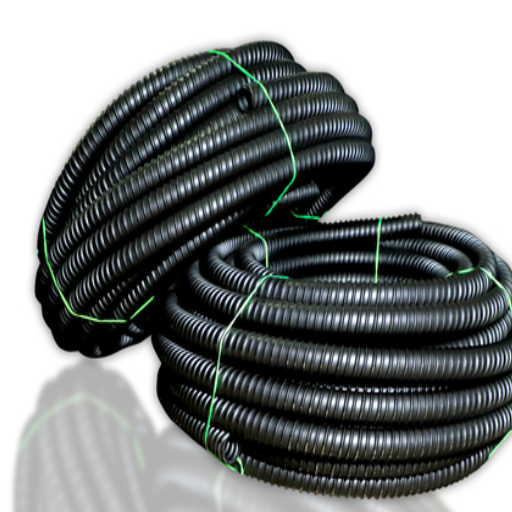
Interpreting Pipe Dimensions and Wall Thickness
Choosing the right HDPE pipe for any application requires understanding the pipe’s dimensions and wall thickness. HDPE pipes are categorized by their outer diameter (OD), wall thickness, and standard dimension ratio (SDR). The standard dimension ratio is defined as the ratio of the pipe’s outer diameter to its wall thickness; this directly impacts the pressure rating of the pipe. Lower SDR values denote thicker walls and higher pressure applications, while higher SDR values indicate low-pressure applications.
An HDPE pipe size chart fulfills a great purpose by offering critical information that meets the customer’s requirements. Such charts show the nominal diameter, actual outer diameter, wall thickness, SDR classes, and maximum pressure ratings. Evaluating this information is critical for meeting project objectives. For instance, thick-walled, large-diameter pipes are best suited for transporting water under high pressure, and small, thin-walled pipes are sufficient for drainage or low-pressure systems.
Accurately understanding these dimensions mitigates the risk in installation and operational activities, protecting against system malfunctions resulting from miscalculating pressure requirements or material overload. Moreover, checking standard graphs that comply with ISO or ASTM verifies the precision and dependability of the chosen pipe size, which guarantees uniformity in construction projects.
The Role of Outside Diameter and Inside Diameter in HDPE Pipes
The outside diameter (OD) and inside diameter (ID) of HDPE pipes are vital in determining the pipes’ suitability for use in water transport systems, gas distribution, and fluid conveyance in industries. The OD is standard as it needs to fit with other fittings and connectors, while the ID changes with the wall thickness. This change is determined by the Standard Dimension Ratio (SDR), which indicates how the OD of the pipe compares to its wall thickness. A lower SDR means thicker-walled pipes, which results in a higher pressure rating and greater strength under stress.
As an example, a pipe with a nominal OD of 110mm and SDR 11 would have a noticeably greater wall thickness and smaller ID than a pipe with the same OD but with SDR 17. These differences are important in engineering when factors like flow rate, pressure limits, and fluid capacity are primary focus areas. Breakthroughs such as computers equipped with CFD (Computational Fluid Dynamics) software enable HDPE systems to be modeled with fluid tanks as long as the OD and ID are entered into the simulation.
Meeting operational requirements without straining the system using pressure over HDPE pipes is ensured through accurate OD and ID measurements. Greater precision improves the likelihood of avoiding pressure spikes, leakages, or material aging in demanding service conditions.
What are the Standard Pipe Dimensions for HDPE Pipes?

How PE4710 and PE100 Standards Affect Dimensions
The PE4710 and PE100 standards impact the dimensions and performance of HDPE pipes by requiring material properties like density, pressure rating, and chronological dependability. These standards set absolute lower limits for the specified criteria, thus ensuring that the pipes manufactured under these guidelines are capable of enduring environments with high-pressure applications and demanding service conditions.
They feature enhanced slow crack growth resistance and improved tensile strength relative to earlier grades. This transition enables manufacturers to adopt greater wall thinning strategies without compromising the high-pressure tolerances of the pipe, leading to reduced material costs and improved throttling efficiency. In the same manner, PE100 pipes with international adoption have outstanding durability, which makes them suitable for diverse applications such as potable water and gas distribution.
Such specifications guarantee system-wide compatibility and lower failure rates due to operational malfunctions. Compliance with PE4710 and PE100 standards ensures the required quality and dependability of HDPE pipes used in modern infrastructure.
Comparison with Ductile Iron Pipe Size Standards
While both pipes have their strengths, Ductile Iron (DI) pipes crown the competition with unparalleled tensile strength, pressure ratings, durability, and overall structural integrity. HDPE pipes, on the other hand, dominate the flexibility category.
| Aspect | HDPE | Ductile Iron |
|---|---|---|
|
Material |
Ethylene-based |
Recycled metal |
|
Strength |
1,600 psi |
42,000 psi |
|
Flexibility |
High |
Low |
|
Corrosion |
Resistant |
Susceptible |
|
Installation |
Fusion joints |
Push-on joints |
|
Pressure |
Lower ratings |
Higher ratings |
|
Durability |
Moderate |
High |
|
Weight |
Lightweight |
Heavy |
|
Cost |
Lower upfront |
Higher upfront |
|
Lifespan |
~50 years |
~100+ years |
Applications of HDPE Pipe Sizes in Various Industries
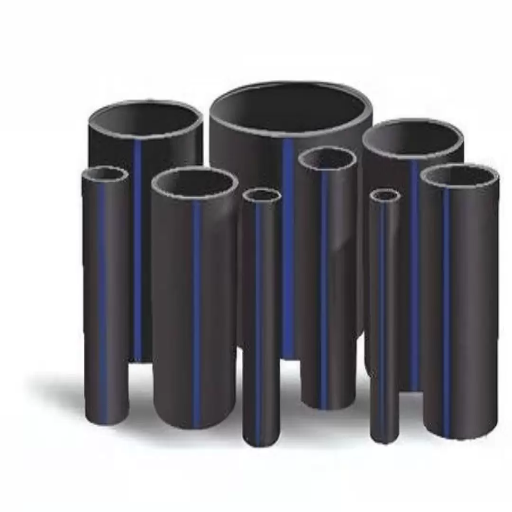
Using HDPE Pipes in Municipal and Industrial Settings
Because of High-Density Polyethylene’s (HDPE) resistance to corrosion, chemicals, and versatility, it has become widely popular in municipal and industrial fields. In municipal systems, HDPE pipes are commonly used in the distribution networks of potable water, wastewater management, and stormwater drainage. Their long-term dependability, reduced cost of maintenance, operational expenses, and capability of withstanding high pressures ensure their wide acceptance. For example, the carbon black treated HDPE pipes can be placed outdoors because they have a high resistance to UV radiation and do not lose structural integrity.
HDPE pipes are essential for process piping, slurry transport, and chemical conveyance within industries. They are extremely useful in environments where aggressive chemicals or abrasive materials are present. Unlike steel or ductile iron, which are traditionally used, HDPE continues to perform under severe conditions like volatile temperatures and corrosion. Moreover, the introduction of better material grades, such as PE4710, which has higher tensile strength and improved hydrostatic design bases, ensures reliable performance in other critical applications.
Information indicates that the sustainability profile of HDPE pipes is both economically and environmentally beneficial, as they can provide service for over half a century. Their lightweight properties lower the expense of logistics and transportation, as well as installation, reducing overall project costs. In conjunction with modern horizontal directional drilling, a type of trenchless technology, HDPE pipelines can be installed with little to no environmental disruption, fully supporting new standards of eco-processed engineering.
The Role of HDPE Pipes in Irrigation and Water and Wastewater Systems
Due to their exceptional physical and chemical properties, HDPE (High-Density Polyethylene) pipes are especially useful in irrigation and in the management of water and wastewater systems. Their flexibility and strength offer significant benefits across all uses in the sector. Below are five critical features that elucidate their significance and assets:
- Corrosion Resistance: HDPE pipes have no internal corrosion like traditional metal pipes do, even in corrosive soils or aggressive chemically submerged waters. This guarantees effective performance coupled with low maintenance for irrigation and wastewater operations in the long term.
- Leak-Proof Connections: HDPE pipes, like all thermoplastic pipes, have heat-fused joints that eliminate any possibility of weak points emerging, thus decreasing the risk of leaks. This feature is invaluable for water and wastewater systems to avert loss, contamination, or infiltration.
- Flexibility and Durability: The flexibility of HDPE pipes permits their toleration of changes in soil conditions, movement of the ground, and swell without the risk of fracturing or cracking. This property is very beneficial to agricultural irrigation systems, which are affected by outside environmental factors.
- High Flow Capacity: The smooth internal surface of HDPE pipes enables the control of friction losses, ensuring a high flow rate of water. In irrigation systems, a constant supply of water is critical, while effective conveyance without blockage is necessary in wastewater systems.
- Expected service life: HDPE pipes are projected to outlive other pipe materials and serve for more than 50 years. This lifespan HDPE pipe could outperform many other materials used in piping systems. Their slower rates of replacement contribute to lower life-cycle costs.
These underscored points justify the necessity of HDPE pipes in modern irrigation systems and water management by bearing savings in finances and ecology.
Specialized Applications in Gas Distribution and Mining
Gas distribution and mining industries have greatly benefited from the introduction of HDPE pipes. The characteristics of HDPE, such as its resistance to environmental stress and pressure, corrosion, and tough operating conditions, are ideal for these industries. Below are five specific examples of their applications:
- Natural Gas Distribution: Due to the chemical and HDPE’s strength, it, along with sourced polyethylene pipes, stands as one of the top choices in transporting natural gas. Besides, the geographical position does not matter since it can be used in both urban and rural areas. Moreover, HDPE’s great leak resistance ensures the safe and effective use of gas within the networks.
- Coal Slurry Transportation: For the mining industry, transporting coal slurry, a mix of water and pulverized coal, has been made easy using HDPE pipes. Since the mixture contains solids, the abrasion resistance of HDPE is beneficial in the maintenance of flow and reducing maintenance.
- Methane Recovery from Mining Operations: The recovery of methane gas from mining activities is made possible due to the use of HDPE pipes. As a combustible, it poses a risk to the environment, but its durability, along with the harsh chemicals it can withstand, enables safe collection and efficient transportation.
- Leaching Process in Metal Mining: During the leaching process, where ores such as gold and copper are extracted from the earth, chemical HDPE pipes are used to transport the corrosive solution and chemicals. Chemical degradation is HDPE`s best attribute, which gives it a long service life.
- Mine Dewatering Systems: Water management is equally as important for every mining operation, especially when it comes to pumping excess water out of mine shafts and tunnels. The flexibility, high-impact strength, and resistance to environmental stress cracking make HDPE pipes very useful. It guarantees dependable operation.
There are variations in the use of HDPE pipes in gas distribution in mining, where strenuous mining conditions require excellent performance.
How to Ensure Proper Fitting and Maintenance of HDPE Pipes
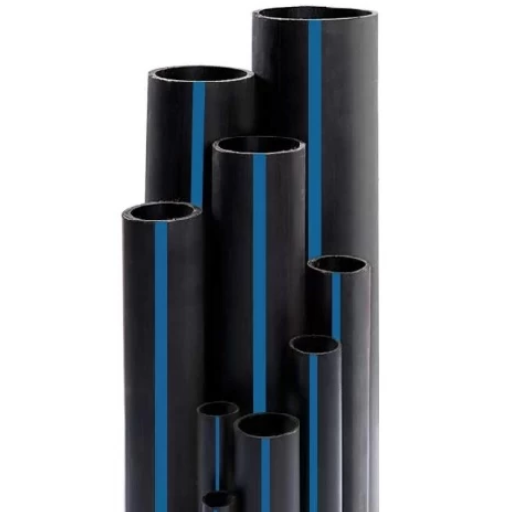
Choosing the Right Fitting for HDPE Pipes
Achieving optimal security, efficiency, and longevity in a piping system begins with picking the right fittings. HDPE (High-Density Polyethylene) pipes are relatively common in ventures like mining, water supply, and gas distribution due to their durability, flexibility, and high-density material over plastic. However, the performance of these industries is subject to the right, compatible, and secure fittings being used for the pipes, about operational stresses, and environmental conditions. The fittings also require high stability when subjected to thermal changes, to properly support the properties of HDPE pipes.
It is necessary to decide the operational conditions in the work environment before selecting the fittings, for example, the altitude and the source of pressure, alongside temperature ranges and exposure to different chemicals within the system. Fittings of butt fusion and electrofusion types are widely regarded among HDPE pipe fittings for their commendable performance. Thermally welded butt fusion fittings guarantee strong and seamless connections through continuous and robust pipelines. While butt fusion providers automation and reliance in open layouts without bearing space constraints, electrofusion fittings ensure precision in more compact, complex, or constrained areas. Operational requirements dictate the most suited method out of the two.
Considering the longevity of maintenance as well as the compatibility of the fittings is crucial. Temperature changes often cause HDPE pipes to expand and contract, and the right fittings should not fail over time due to these flexing motions. More advanced pipeline systems are beginning to incorporate smart technologies such as remote monitoring sensors that provide real-time detection of system leaks or stress, which makes these technologies quite popular. Optimal performance and system longevity regarding HDPE pipe systems are also achieved with proper installation, manufacturer guidelines, and regular inspections.
Best Practices for Maintenance and Longevity
To ensure optimal service life and HDPE pipe performance, adherence to established service best practices is imperative. First of all, best practices dictate inspection procedures that check for wear, damage, or stress along the pipeline. High-grade inspection methods like ultrasonic testing and thermal imaging enhance the accuracy of these assessments.
Adhering to low-impact joint fusion trenching and backfilling instructions significantly limits joint failure and pipe deformation. It is critical to limit the possibility of engaging incorrectly trained personnel or faulty equipment at this stage. Keeping the soil position, allied temperatures, and prospective chemicals cuts her the pipelines position for surviving resiliency assaults.
Proactive measures on maintenance activities are augmented through the application of modern technologies like remote monitoring systems. Real-time data on pressure fluctuations, possible leaks, and abnormal stress polygons are tracked, which enables timely intervention from operators prior to a failure occurring.
Lastly, preserving all documents is equally important. Combining HDPE pipe systems with the proper maintenance methodologies, along with advanced monitoring technologies, ultimately leads to unparalleled durability and functionality over time.
References
Frequently Asked Questions (FAQ)
Q: What is HDPE, and why is it commonly used for piping?
A: HDPE, or high-density polyethylene, is a type of plastic known for its strength, durability, and chemical resistance, making it ideal for a wide range of applications, including potable water applications, sewer systems, and chemical transport.
Q: How do HDPE pipe sizes and dimensions vary?
A: HDPE pipes come in a variety of sizes to suit different needs. They are available in both IPS sizes (iron pipe size) and metric sizes. The size and dimension of the pipe are determined by specific applications and can range from small diameters for residential use to large diameters for industrial applications.
Q: What are the benefits of using polyethylene pipe in fluid transport?
A: Polyethylene pipes are known for their flexibility, corrosion resistance, and reliability. They are suitable for transporting a wide range of fluids, including potable water, sewage, and chemicals. The polyethylene material provides excellent chemical resistance and can withstand varying environmental conditions.
Q: What is the significance of PE4710 HDPE in piping?
A: PE4710 is a high-performance grade of HDPE that offers enhanced strength and durability. It is commonly used in applications requiring high pressure and long-term reliability, such as potable water systems and gas distribution networks.
Q: How does the minimum wall thickness impact the performance of HDPE pipes?
A: The minimum wall thickness of HDPE pipes is crucial for maintaining structural integrity under pressure. It ensures that the pipe can handle the specified pressure and load without failing, thus providing reliability in various applications.
Q: What are the standard regulations for HDPE pipes used in potable water applications?
A: HDPE pipes used in potable water applications must comply with standards such as ASTM F714 and AWWA C901. These standards ensure the pipes meet the necessary safety and performance criteria for transporting drinking water.
Q: Can HDPE pipes be used for both above-ground and underground installations?
A: Yes, HDPE pipes are versatile and can be installed both above-ground and underground. Their high density and chemical resistance make them suitable for harsh environmental conditions, providing long-term reliability in both installation scenarios.
Q: What are the considerations for selecting the right size and dimension of polyethylene pipe?
A: When selecting the size and dimension of a polyethylene pipe, it is important to consider the type of fluid being transported, the pressure and temperature conditions, and the specific application requirements. Consulting with standards such as ASTM D3035 can also guide an appropriate choice.
Q: How does the chemical resistance of high-density polyethylene benefit industrial applications?
A: The chemical resistance of high-density polyethylene makes it ideal for industrial applications involving the transport of aggressive chemicals. This property ensures that the pipes do not degrade or fail when exposed to harsh substances, thus maintaining the integrity and safety of the system.



